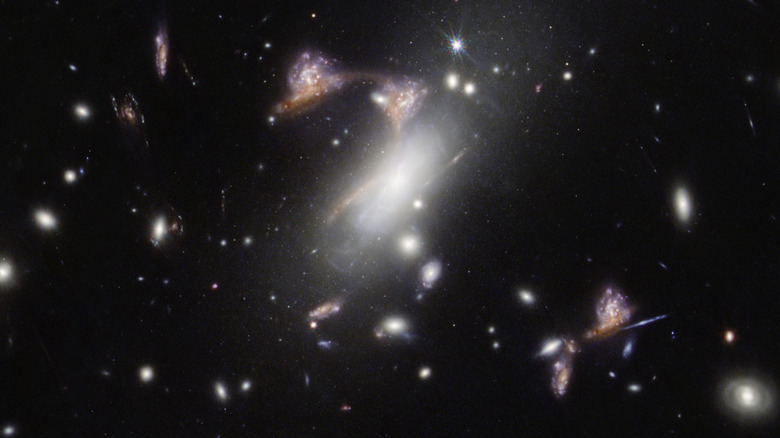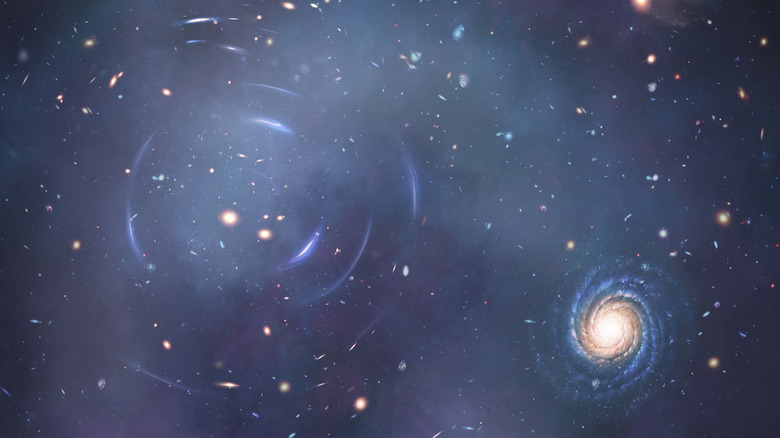The Real Reason It Looks Like There's A Question Mark In Space
In 2023, the James Webb Space Telescope turned its gaze to a patch of space nearly 1,500 light-years away from Earth and met a surprising sight: a glowing question mark inscribed on the blackness of space. It was as if the universe was sending a sign to perfectly encapsulate the nature of space exploration. The message being no matter how far we explore in space, there will always be more questions than answers. But of course, reality is not quite so poetic.
Astronomers were puzzled by the formation, partly because they weren't looking for it in the first place. They were actually using the telescope to capture images of two actively forming stars in the Vela Constellation, providing us with the clearest images of star births ever seen. That alone would have been enough to cement the image's scientific value, but keen eyes spotted something else. The cosmic question mark is only a tiny mark near the bottom of the picture, but it has grabbed attention like nothing else.
The symbol in question has been identified as a pair of galaxies within the galaxy cluster MACS-J0417.5-1154. A galaxy cluster is exactly what it sounds like: a collection of hundreds or even thousands of galaxies bound together by their own gravity. The area was previously photographed by the Hubble Space Telescope, but the question mark went unnoticed. Now that instruments used to study stars have advanced, we are able to observe the unique phenomenon that gives this galaxy cluster its questionable shape.
Cosmic shapes are distorted by space time
Galaxy clusters have been widely observed featuring different types of galaxies, often in the thousands, but the question mark cluster is uniquely eye-catching. The image from the James Webb Space Telescope makes it look like the galaxies are clustered in a curved formation, but this is actually just a trick of the eye created by gravity. The relationship between gravity and the mass of planets and stars is the basis for orbit, and it works a bit similarly with galaxy clusters, wherein the gravity of all the galaxies attracts them to one another. However, whole galaxies have vastly more mass than any planet or star, so the effects can get extreme.
Galaxy cluster MACS-J0417.5-1154 is so massive that its gravitational field warps the fabric of spacetime, an effect known as gravitational lensing. The main portion of the question mark observed is composed of two galaxies within the cluster that appear to be curved due to gravitational lensing, like your reflection curves in a funhouse mirror. The dot at the bottom of the question mark is an unwarped galaxy that happens to be aligned with our point of view in such a way that it appears below the pair of curved galaxies.

